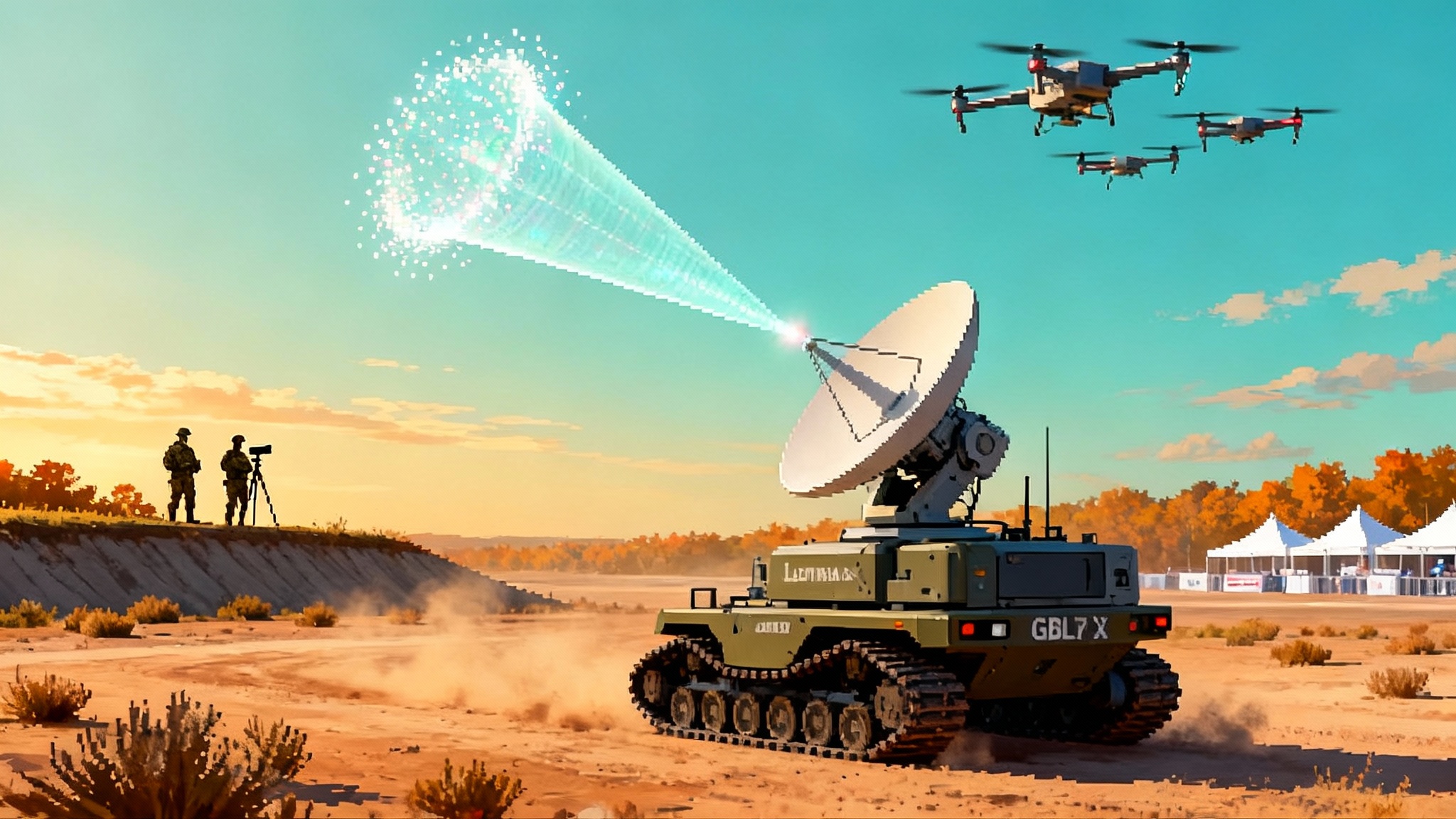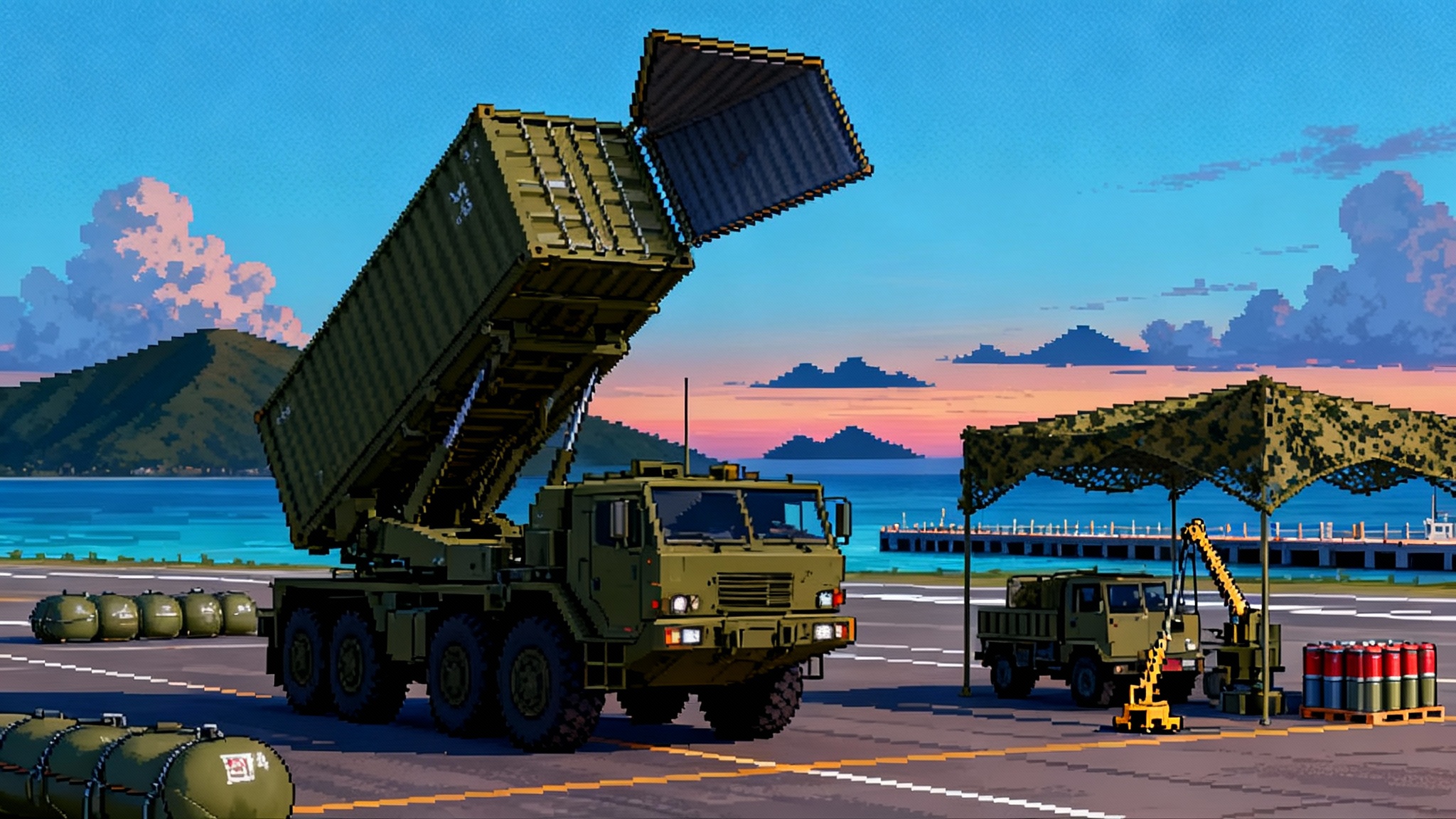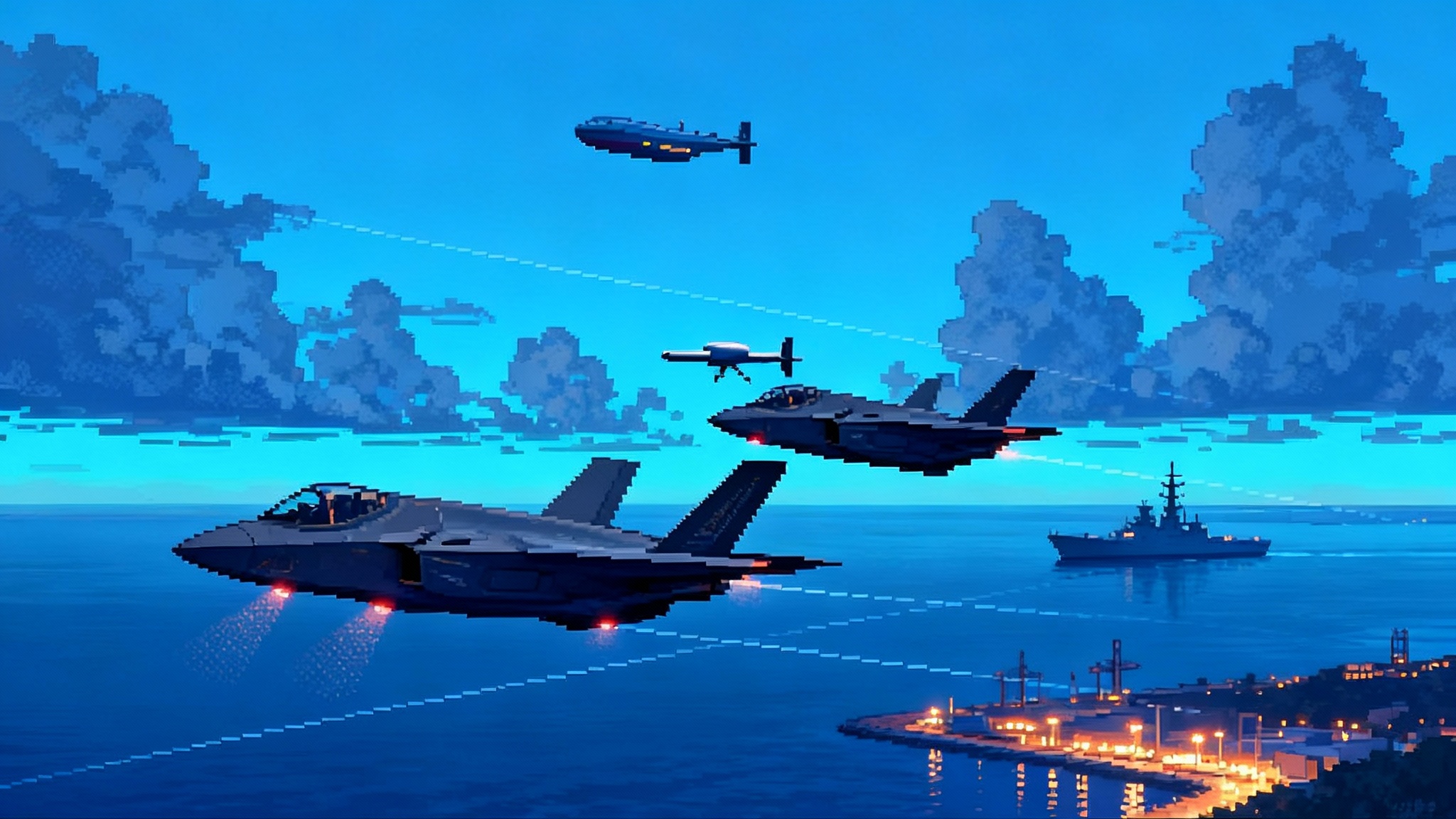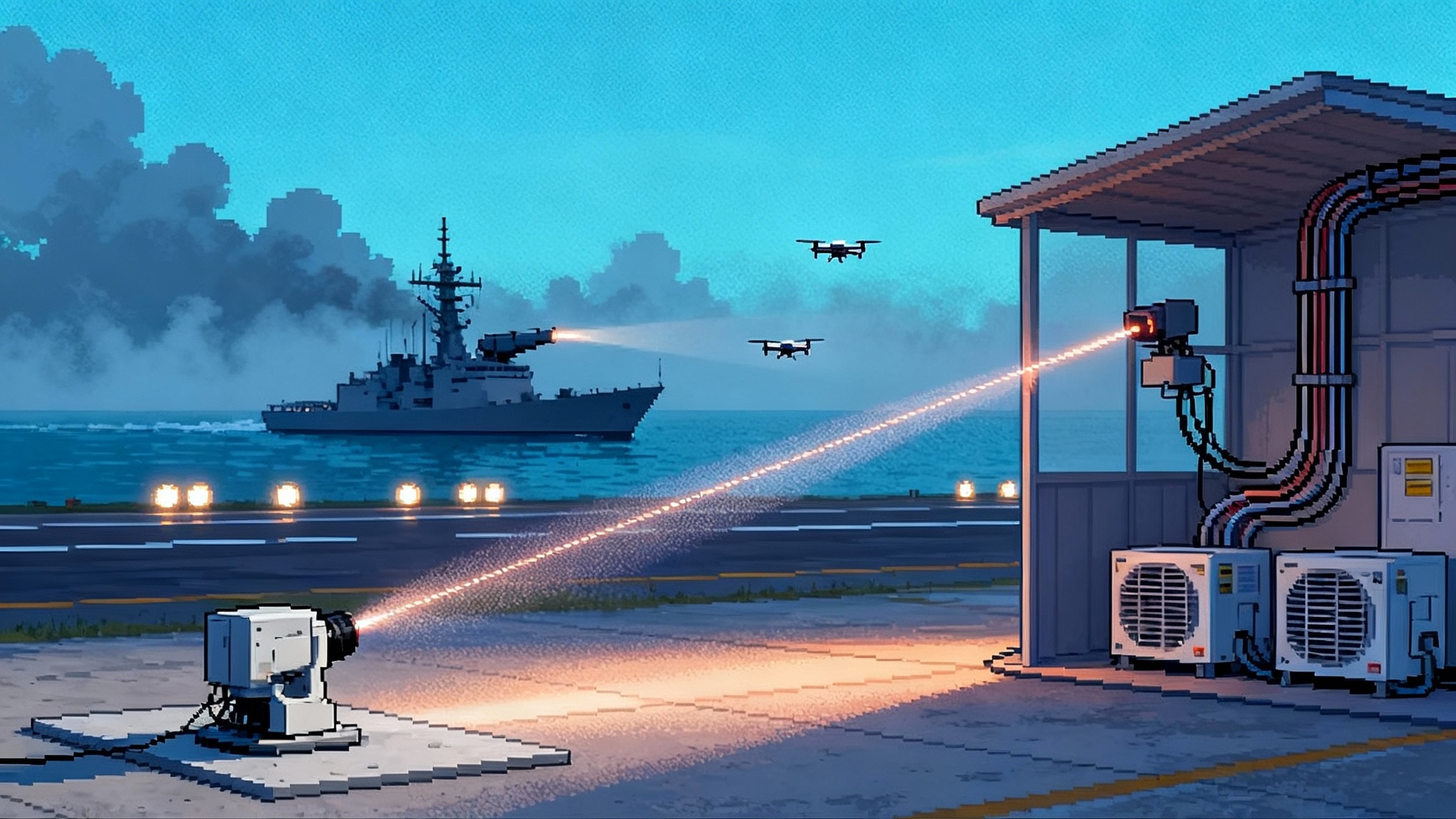From Lasers to Microwaves: Leonidas Fells 49-Drone Swarm
Epirus’ Leonidas high‑power microwave system neutralized 49 drones in one pulse and 61 of 61 targets overall on August 26, 2025. At AUSA 2025, a robotic variant arrived, signaling a shift from demonstrations to doctrine.

The moment microwaves move from demo to doctrine
On August 26, 2025, at Camp Atterbury in Indiana, a cluster of quadcopters lifted into a pale morning sky and then fell like cut marionettes. Epirus’ Leonidas, a high power microwave system, pulsed once and disabled 49 drones at the same time. Across five scenarios that day it downed 61 of 61 targets. Axios was the only media present, reporting how the system zaps a 49-drone swarm in seconds. You could hear the pitch in observers’ voices change. The question was no longer whether high power microwaves work. The question became how fast to write them into the playbook.
Two months later, on the floor of the Association of the United States Army conference in Washington, Epirus and General Dynamics Land Systems rolled out Leonidas Autonomous Robotic. The system pairs Leonidas with the TRX tracked robotic vehicle, bringing the same one to many effect to a mobile, unmanned chassis. Army Recognition reported that the companies unveiled Leonidas Autonomous Robotic. If Atterbury was the proof, AUSA was the path to a fielded concept of operations. Together these moments explain why 2025 marks a hinge point. Lasers have led the first wave of directed energy against small drones. Now high power microwaves are stepping into the lead.
Why lasers are not enough
Lasers promised video game precision. They burn through a target’s skin, sensor or battery with a narrow beam of light. That precision is a strength, especially around civilians and friendly aircraft. It is also a cost. Lasers work one target at a time and require a steady stare. Think of using a magnifying glass to burn a hole in a leaf. It works if you hold it perfectly still and the sun is bright. Add wind or haze and your dwell time grows. Now try to burn 20 leaves before they blow past you.
The modern drone fight is the opposite of a single leaf. In Ukraine, in the Red Sea, and across training ranges in the United States, the problem looks like a flock. Ten, twenty, fifty small aircraft, some networked, some fully autonomous, many cheap enough to be expendable. Lasers can absolutely kill them, but each one costs time and power and thermal management. The laser’s magazine is not the number of shots in a box. It is the number of seconds you can keep the optics on target before the system needs to cool down. That trade will always matter. Lasers will keep their place for pinpoint effects and for targets that demand surgical precision. The crowd problem asks for a different tool. For a deeper look at where lasers already fit, see how lasers go operational in air defense.
What a microwave pulse does to a swarm
A high power microwave is not a laser painted on a point. It is an electrical storm you aim. In simple terms, Leonidas emits a very strong burst of radio frequency energy. Sensitive electronics are designed to handle tiny, well behaved currents. Flood them with a sharp, high energy pulse and those circuits stop doing what they were designed to do. A flight controller reboots. A data link browns out. A voltage regulator fails open. Imagine a surge that trips a breaker in your house. The lights go dark and anything depending on power stops, often without physical damage. That is the effect designers try to induce, with tunable forms and durations of energy that can be shaped for the target set.
Two ideas matter for doctrine. First, the effect is one to many. You do not have to point at each screw of a dozen quadcopters. You create a volume of electromagnetic stress and any drone within, especially those with unshielded consumer electronics, can be disabled. Second, the effect is software defined. Operators can notch out protected frequencies, draw geofenced keep out zones, and choose pulse shapes for brief, low collateral effects rather than broad, indiscriminate blasts. Those software guardrails are the beginning of rules of engagement for electromagnetic weapons.
From test videos to tactics
In every new technology cycle there is a moment when a capability stops being a lab curiosity and starts writing checklists. The Atterbury event looked like that moment. The number 49 is less important than what it proved about tempo and cost. If one pulse can defeat dozens of drones, the battery, fuel, and coolant that power the system become your magazine. That translates to persistence. It also changes the economy of defense. You do not need to fire a Stinger-class missile at a quadcopter that costs less than a lawn mower. You reserve expensive interceptors for what only they can kill and you task high power microwaves with clearing the sky of small nuisances and swarms.
A microwave effector also plays well with the rest of the layered stack. Jammers deny control links. Radars and passive sensors detect and classify. Kinetic effectors kill what gets through. Lasers provide precise, scalable damage where the rules require it. An HPM fills the one to many tier. In staff terms, it shifts the shot doctrine from one shooter per track to one shooter per raid. That is the move from demonstrations to doctrine. Tying this into the wider sensor network mirrors how the LEO kill web rewires defense.
AUSA 2025: mobility seals the deal
Mobility is the difference between defending a base and defending a brigade on the move. The AUSA debut matters because it puts the HPM effect on a robotic platform sized for maneuver units. The GDLS TRX chassis brings hybrid power, onboard computing, and autonomy kits, all wrapped around a payload bay large enough for Leonidas and the batteries and cooling it needs. The package can sprint with a convoy, then hold a perimeter at a logistics site. If you are designing short range air defense around trucks and tracked vehicles, you can now drop a microwave node into the formation without a science project.
Just as important, the mobile variant carries the software safety features into a crowded spectrum. Friendly drones, radios, and civilian infrastructure all share the air. Leonidas’ ability to notch out protected bands and draw geofenced bubbles limits the risk of electromagnetic fratricide. That does not remove risk. It gives commanders knobs to turn and checklists to enforce. It is the difference between hoping a new weapon will behave and configuring it to behave.
The laser to microwave handoff
Over the last five years, the services put real lasers in the field. The Army’s Directed Energy Maneuver Short Range Air Defense mounted a 50 kilowatt laser on a Stryker. The Navy installed a high energy laser with integrated optics on a destroyer. The Air Force and Marines fielded compact laser weapon systems for point defense. These are not powerpoint projects. They have burned holes in targets on test ranges and on deployments.
Yet the pace and price of drone swarms push the force toward effects that scale across many targets at once. That is why the 2025 data point matters. When a system demonstrates a one to many kill and then appears in a trade show as an integrated, mobile product, it signals that the handoff is happening. Lasers do not go away. They become part of a directed energy mix, used when precision and line of sight are available and collateral limits are tight. Microwaves step up for volume fire.
What changes in the playbook
If you are a brigade air defense officer, a microwave node gives you new tasks and new math.
- Shot doctrine: You will decide when to pulse, how long to pulse, and how often, based on the density of targets and the collateral profile the commander approves. You will define raid-based firing policies, not just track-based ones.
- Sensor fusion: Microwaves still need targeting quality. They need to know where the swarm is. You will fuse radar, electro optical, and passive detection into a three dimensional volume where an HPM pulse has the highest probability of effect. The node goes where the swarm density is greatest and where backlobes will not harm friendly systems.
- Power logistics: Your magazine is electrons. You will plan for battery swaps, generator fuel, and heat rejection. In hot, high environments you will learn how many pulses you can fire before thermal limits constrain you and how to stagger nodes to maintain coverage.
- Electromagnetic deconfliction: Your staff will publish spectrum control measures the way we publish no fire areas. You will mark friendly control links and critical infrastructure. You will practice firing windows where friendly drones clear the volume, and you will rehearse what happens if a friendly asset reenters the bubble early.
- Training and maintenance: Your crews will need to be as comfortable with waveform libraries as with bore sight procedures. You will maintain gallium nitride transmitter modules and cooling systems, not just launchers and optics.
The countermeasures come next
Nothing in warfare holds a monopoly for long. Adversaries will harden flight controllers, shield cables, and add surge protection. They will increase physical separation of critical electronics and use conductive coatings. Swarm tactics will evolve to saturate from multiple axes and altitudes to stress the geometry of the microwave volume. Some drones will spin, tumble, or present minimal cross section, buying milliseconds of survival in the pulse. Others will move to fiber optic tethers or purely autonomous missions to blunt traditional jamming and then hope to ride out the microwave surge. Expect decoy drones that soak pulses while more valuable platforms slip through.
The answer is iteration. Microwave systems are software defined, so waveform libraries can evolve. Power can increase. Beam patterns can change. But there are tradeoffs. More power can expand effects in unintended directions, so deconfliction tools must improve. Shielding on enemy drones will raise the bar, so sensor cueing and timing must tighten. The fight becomes a race between protection and pulse. For cost and force design implications, see how uncrewed fighters reset the cost curve.
Costs and constraints you need to face now
- Collateral risk: Even low collateral pulses can affect nearby electronics. That argues for strict procedural control, live fire training in complex electromagnetic environments, and automatic safeties that prevent firing if a protected device enters a defined zone.
- Weather and clutter: Microwaves suffer less than lasers from fog or dust, but terrain and buildings create reflections and shadowed areas. That pushes you toward elevated mounts, smart siting, and mobile nodes that reposition as the fight shifts.
- Legal and policy frameworks: Rules for electromagnetic effects must be as clear as those for explosives. Commanders need defined authorities for firing near civilian infrastructure and specific guidance for after action reporting when unintended effects occur.
- Supply chain: Gallium nitride devices, thermal management hardware, and high density batteries are now critical components in air defense. The force will need contracts, spares, and industrial capacity that match the surge in demand.
Other signals from 2025
The Leonidas demo is the sharpest signal, but it is not alone. The Marines have been evaluating an expeditionary variant for counter swarm missions. The United Kingdom has tested its own high power microwave program, aiming at similar one to many effects. The trend is not a single company or a single country. It is a competitive field moving toward operational use.
If you are an adversary, you now have to assume that a convoy or a forward operating base could carry an invisible shotgun that cracks across a swath of airspace. That changes your planning. You will budget more drones per mission, harden electronics, and search for gaps in coverage. If you are a defender, you will push to fill those gaps with smarter siting, better cueing, and more nodes.
A practical roadmap for commanders
- Write electromagnetic rules of engagement now. Include spectrum control measures, protected band lists, geofencing procedures, and abort criteria. Train crews to apply them under pressure.
- Redesign the battery and generator plan. Treat power and cooling as ammunition. Stage swappable energy modules and quick connect coolant loops for continuous operations.
- Integrate HPM into the sensor to shooter network. Build a common operating picture that marks microwave coverage volumes. Let battle management software recommend pulse timing based on swarm density and friendly proximity.
- Run red team trials. Fly hardened drones, decoys, and multi axis raids against the HPM nodes. Measure which waveforms work and where geometry breaks your coverage. Update tactics quarterly, not annually.
- Pair HPM with lasers and guns. Use lasers where precision and low collateral effects are mandatory and where single targets must be cut. Use guns and missiles for the leakers and for targets that survive the pulse. Let the microwave clear the first wave.
The bottom line
Lasers opened the door for directed energy by proving that electricity can replace explosives for air defense. High power microwaves just stepped through that door and into the center of the room. The August 26 demonstration showed a one to many kill in a way that changed minds. The October unveiling of a mobile, unmanned variant showed a path from a test range to a brigade.
Doctrine will follow the hardware. When staffs plan around raid based firing, when logistics officers treat electrons as ammunition, and when spectrum managers publish keep out volumes the way artillery publishes no fire areas, we will know microwaves have arrived. The agility of software defined waveforms and the persistence of electric magazines make them the right tool for the crowd problem. Lasers keep their surgical role. Microwaves take the mass.
The next time a cloud of cheap quadcopters rises from a treeline, no one will be counting targets one by one. They will be shaping a volume, checking the friendlies, and pulsing the sky. What mattered in 2025 was not just that the drones fell. It was that the tactics finally stood up beside them.








